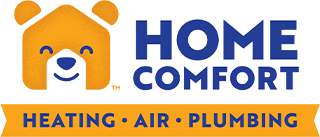Investing in your indoor air quality is an investment in your health and well-being. When you expose yourself to contaminants on a regular basis, this can lead to several unpleasant symptoms. From allergy symptoms to chronic headaches, poor indoor air quality can disrupt your life. There are several methods you can use to improve your indoor air quality, some more affordable than others.
Different Indoor Air Quality Contaminants
The type of air quality solutions you invest in will be determined by the kind of contaminants that are in your indoor air. It’s common for homes to attract high levels of pollen in the spring even if you are keeping your windows and doors closed. Dust and dust mites are also a concern throughout the year, causing many people to experience allergy symptoms like itchy eyes, irritated skin, and a stuffy nose. You may notice that the surfaces in your home appear dirty frequently when dust is an issue.
If you have pets in the home, they can leave behind dander and fur everywhere they go. These materials can enter your HVAC system, circulating through the ductwork and your living spaces. Other irritating indoor contaminants include cigarette smoke, cooking odors, mold spores, and more.
Volatile organic compounds, or VOCs for short, are a bit different. These are chemicals that off-gas from different products and materials in your home. They cannot be trapped using traditional filtration. You’ll need to invest in activated carbon filtration or high-efficiency particulate air filters (HEPA) to remove VOCs effectively.
Indoor Air Quality Solutions
Indoor air particulates can vary in size. Anything less than 10 micrometers can be easily inhaled into the body through your airways. They can cause respiratory and sinus issues, but they can also affect other areas of the body, like your heart and nervous system. We recommend having an indoor air quality assessment performed. This process will determine what kind of particulates are in your indoor air. We can make suggestions for ways to improve your indoor air quality based on this data.
You may already have a portable air purifier in your home. These units are somewhat effective though they only remove a small amount of particulate matter. There is a lot of square footage in your home that will be untouched by a portable purifier. A whole-house air filtration system can be installed onto your HVAC system. All the air passing through your system will encounter the filters that are part of your filtration equipment. You’ll reap the benefits of cleaner air throughout your entire home. Just make sure that you keep your vents and registers open to promote adequate airflow through your residence.
Another method of controlling the quality of your indoor air is by investing in a UV light. This light sanitizes your indoor air, removing things like bacteria, viruses, and other pathogens. You cannot use a UV light to trap particulate matter, but it has impressive sanitizing effects. This is technology that pairs well with other methods of filtration. Always have a professional install your UV light for you. There is a risk of exposure to radiation during the installation process. We can also inspect and service your UV light on a yearly basis as part of routine maintenance. This process includes cleaning the surface of your light and potentially replacing it with a new light. This will ensure that you and your family are safe from pathogens in the air you’re breathing.
Protecting Your HVAC System
Investing in a new furnace or air conditioner is a major expense. These pieces of equipment are designed to last approximately 15 to 20 years. By investing in indoor air quality solutions, you can protect the integrity of this equipment. Particulate matter can accumulate on the inside of your heating and cooling equipment. As your equipment runs, it will need to work harder to meet your temperature settings. This can lead to equipment strain and ongoing repairs. Indoor air quality solutions can also help you lower your energy consumption, which reduces your monthly utility bills.
Addressing Humidity
Keeping the level of relative humidity in your home between 35% and 50% is ideal for protecting the quality of your indoor air. When levels of moisture in your home rise, this sets the stage for potential mold growth. Mold can make your home smell musty but can also impact your health and safety. If it’s determined that mold is present during an indoor air quality assessment, professional remediation may be necessary. The process can be very involved and expensive, especially if mold is found in your ductwork and throughout your home.
You can control your indoor humidity using a whole-house dehumidifier if you have too much moisture present. You can add moisture to very dry air using a whole-house humidifier. Both pieces of equipment are smart investments. They can improve your indoor air quality throughout the year, depending on the current conditions in your home. If you invest in a smart thermostat for your home, you can use this device to monitor your indoor humidity. You can use your smart device or even voice controls to switch your humidifier or dehumidifier on and off. This equipment can be set up to run automatically based on hygrometer readings as well.
Improving Comfort
Your home should be a comfortable location where you can relax and unwind after a long day. There are different indoor air quality conditions that can impede achieving a comfortable residence. If you have very humid air in your home, this may feel like your indoor temperature is higher than it is. This can result in your overrunning your air conditioning unit to accommodate. Dry air can feel cold, requiring you to run your furnace to achieve warmth.
If you have many particulates in your indoor air, this can cause you to frequently sneeze or cough. This can make it difficult to sleep and relax. Whole-house filtration can boost indoor comfort in that regard.
Considering Your Productivity
Many people work from home these days. Because of this, it’s more important than ever to ensure that your home environment is conducive to getting your work done. Poor indoor air quality can be uncomfortable and affect your ability to focus. Brain fog is something that people can experience when their allergies are flared or they’re exposed to volatile organic compounds on a regular basis. Investing in air purification and other indoor air quality solutions can boost your productivity and help you focus on the task at hand.
If you would like to learn more about the ways that you can improve your indoor air quality and why these investments are worth it, Home Comfort Services is here to help. There may be incentives and rebates that can offset the cost of this whole-house equipment. We can provide you with more information regarding these savings. We also install furnaces, air conditioners, heat pumps, and commercial systems. Contact Home Comfort Services in Grand Junction to schedule an appointment today.





